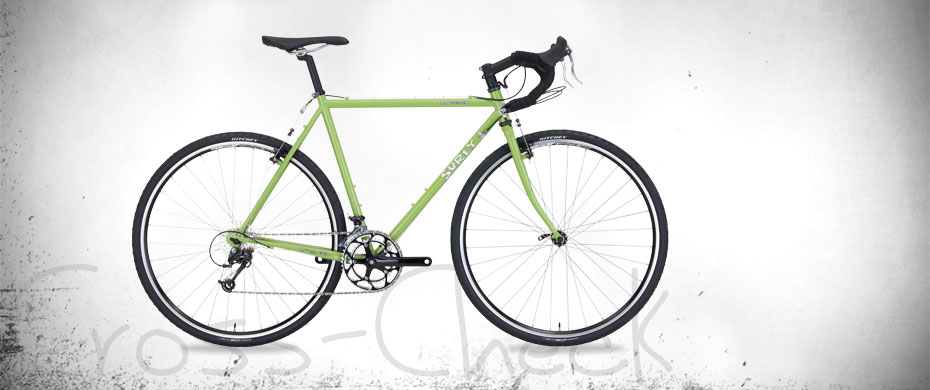Nf = Ni + 1
Nf = Nd - 1
where Nf is the number of bikes you should own, Ni is the number of bikes you currently own, and Nd is the number of bikes which would cause your wife to leave you.
Could you own just one or two bicycles? You could. I suppose you could have but one pair of shoes too, and maybe one wedge or even just one club; yeah, you could do that. But what happens when your slicks touch gravel? What then, Shoeless Joe Jackson? Or what if your fork bottoms out on a jump, are you really going to make it through that slight jilt of the forearms? Don't be silly.
When thinking about constructing your quiver, the two biggest considerations are: 1) riding surface, and 2) riding style. Riding surfaces can loosely be classified as follows:
 |
| All I hear is Queen. |
- Poor road
- Gravel
- Forest road
- Flow singletrack
- Technical singletrack
- Downhill singletrack
Riding styles can be classified as follows:
- Comfort
- Racing
- Endurance
- Technical
The "racing" category is loose, as any riding style could be raced. I kept it simple with the categories I would consider racing in. Here are the surfaces and styles for each bicycle classification:
- Commuter = comfort, poor road
- Touring = comfort, endurance, poor road
- Road - training = endurance, nice road, poor road
- Road - racing = racing, endurance, nice road
- Triathlon = endurance, racing, nice road
- Cyclocross = racing, poor road, gravel
- Cross-country = racing, endurance, gravel, forest road, flow ST
- Trail = endurance, technical, flow ST, technical ST
- All-mountain = technical, flow ST, technical ST
- Downhill = technical, technical ST, downhill ST
There's an additional consideration for singletrack mountain biking: how the ride feels. Old trails feel new when switching from a hardtail to an FSR or 29er. Here are the ride feel categories and their corresponding surface types:
- Hardtail 26er - flow ST, technical ST
- Hardtail 29er - forest road, flow ST, technical ST
- Short-travel FSR - flow ST, technical ST
- Long-travel FSR - technical ST, downhill ST
The key to filling out your quiver is to figure out 1) what you want the bike to do, and 2) what you might like the bike to do. Some stuff you may want to do, but not at the level that requires a bike just for that activity. Fortunately, it's possible to combine a lot of bikes into primary and secondary functions. Here are some possible combinations:
- Steel road bike = commuter + touring
- Aluminum/carbon road bike + aerobars = road training/racing + triathlon
- MONSTERCROSS!!! = cyclocross + cross-country
- Mid-travel FSR = trail + all-mountain
Currently, my bike quiver is as follows:
- Commuter = '89 Trek 1100 aluminum
- Road - training, triathlon = '12 Raleigh Revenio
- Cross-country, trail = Custom steel hardtail 26er
- Trail, all-mountain = '05 Stumpjumper FSR 26er
Some obvious gaps. Here's my wish list, in order of priority:
 |
| Surly Cross Check - The World's Most Versatile Frame |
2. Touring. As I said above, I don't have a lot of faith in the 1100, so I'm not sure I want to take it on long distances. Ideally I'd find a solid steel frame and deck that out for pack-loaded cycling adventures. I plan to do a few touring trips out in the Hill Country this summer and fall, but it won't be a regular thing. In the meantime, it wouldn't hurt to deck out the 1100 with a heavy-duty rack for commuting, with the anticipation of sticking it on a steel frame in the future.
 |
| The Dream. Short two helmets, of course. |
3. Cross-country. It's a no-brainer - 29er hardtail. For the moment, the 26er steel hardtail should be more than capable of handling the cross-country terrain and ride length. I certainly won't need another mountain bike for College Station trails.
4. Triathlon. I really haven't been doing triathlon stuff long enough to know whether this is something I'm going to get into seriously. My left knee is still pretty beat up, and I won't be racing for at least a couple months. For the time being, I'd be fine just sticking some aerobars on a road bike. From what I've read, the biggest gains you can get from a triathlon bike come from the aerobars and heightened seat position. The aerodynamics of the bike help with speed and the more aggressive angle of the frame changes your body position a bit, but they're really for people who intend to get into this sport competitively. I don't think I'm one of them.
5. Fixie/track or cyclo-touring. So where'd these guys come from? Well, I neglected to put in the final, and possibly most important, quiver category: the project bike. This is the one that marinades in your stand as you do your biweekly eBay part search. Ideally you would convince yourself that this bike won't cost much, and then ignore the stream of receipts that flood in. And it should be a monster; a cyborg, if you will. A cyclocross touring bike built for off-pavement adventures would be pretty incredible.





No comments:
Post a Comment